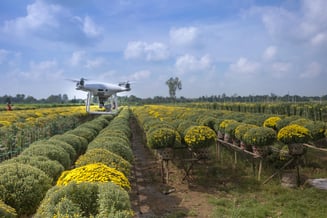If you're looking to better track IT assets within your organisation, the first step is to define what assets you should include in your asset database.
There are some assets that you 100% need to track because they are high value and/or come with high risks to the business. But tracking other assets will be down to your business's needs. This blog aims to document some of the most common and essential assets businesses track so you can decide whether they should be managed at your organisation.
What is an asset?
An asset is anything that has value to your organisation and, therefore, is worth spending time actively managing so you can more efficiently utilise it, understand its history in the event of an issue, and minimise the associated risk.
We can break the important IT assets into four main categories. These categories are not concrete, and some organisations will have slightly different definitions.
You may also break these categories down into more niche sub-categories depending on what data model your IT asset management platform supports, but however you decide to organise your data, you will likely have these four categories.
Hardware assets
Hardware assets are the most familiar and straightforward to understand. These are physical devices that you use to deliver your IT services.
Critical hardware assets to track:
- Computers
- Servers
- Mobile devices
- Network equipment
- Printers and scanners
- Security cameras
- AV equipment (sometimes managed by the facilities department)
Benefits of tracking hardware assets:
- Being able to instantly know the location and owner in case of any issue related to the asset
- Minimise the risk of theft or loss
- Monitoring stock levels to help with planning and budget spend
- Proactively maintaining them to extend their lifetime
- Knowing when warranties are due to expire to avoid additional costs and retire assets at the right time
Software assets
Software assets are the first virtual assets on this list. Software asset management tends to focus on managing the software licences associated with the assets. But if you have in-house applications, tracking the users and lifecycle of those applications can be helpful too.
Key software assets to track:
- Operating systems
- Perpetual software
- SaaS software
- Custom-built apps
Benefits of tracking software assets:
- Stay compliant with licence agreements
- Speedy audits
- Save costs by not overspending on licences
- Forecast future spending based on licence usage
Cloud assets
The definition of cloud assets varies slightly from business to business. Usually, it includes anything needed to provide cloud services. Managing cloud assets can be tricky as they tend to change more frequently than the two examples above. However, you can often connect IT asset management tools and cloud providers to simplify managing them.
Important cloud assets to track:
- Virtual machines
- Containers
- Databases
- Storage
Some organisations will also include cloud-based software in this category, especially more infrastructure-based software like firewalls and IAM platforms.
Benefits of tracking cloud assets:
- Save costs by removing underutilised cloud resources
- Understand future renewal prices by monitoring usage
- Ensure compliance
Data assets
Data assets are the most challenging category to define. They are less tangible and can be anything you want that is valuable for you to track. We will list the fundamental examples below, but often, data assets make themselves known as you think, "Wouldn't it be great if we could link our other assets to X?" or when you realise you've spent a lot of time checking old spreadsheets to find information on something. When that happens, if you have a flexible asset management system, add a new asset type and start tracking!
Fundamental data assets to track:
- Warranties
- Vendors
- Contracts
- Licences
- Locations
- Employees
- Business applications
- Services
Benefits of tracking data assets:
- Being able to create and view relationships between different assets, e.g. an employee with a laptop or a server with a location
- Get more context on your hardware, software, and cloud assets through relationships when issues or requests occur
- Automate various notifications based on expiration or renewal dates or when licenses are due to run out
When relationships are discussed, there starts to be some overlap with configuration management. The line between asset management and configuration management has always been a little blurred. We recommend picking an asset management platform that can handle both aspects so it can scale as your business's needs scale.
Summary
Now that you have an idea of what your business may want to track, you can start building and prioritising your list.
We recommend incrementally introducing or improving your asset management, asset type by asset type, from highest priority to lowest priority. We've heard of many ITAM projects failing because the business tried to do too much at once. By breaking it down into increments, you can stay on top of all your assets and ensure your ITAM system is correct.
Share this post
About the author
.png)
Blog first published on 31/07/2024, last updated on 13/11/2025.







